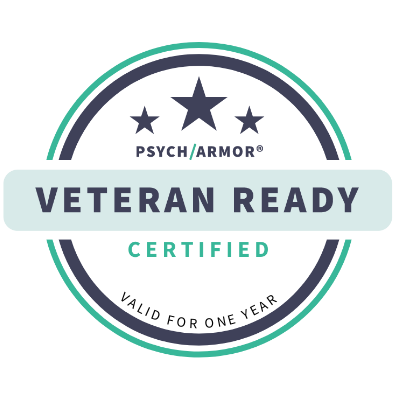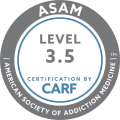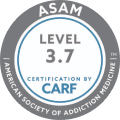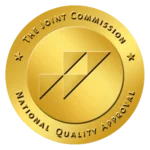The words opiate and opioid are often used interchangeably. However, there is a technical difference in the composition of the two drug variants. Looking at their differences can help drug users and others better understand the modern opioid crisis.
Opiates and Opioids Defined
The term “opiate” is generally used to refer to substances derived from the opium poppy. The term opium itself is used to refer to an addictive substance prepared from the juice of the opium poppy. The word opiate can refer to any number of narcotics containing opium. Essentially, an opiate is any psychoactive substance consisting entirely of natural ingredients from the opium poppy.
The term “opioid” has been historically used to refer to a drug, whether illicit or medicinal, that contained synthetic materials rather than simply the natural extract of the opium poppy. Natural opiates have a very long history of use in medicine; however, due to the addictive nature and the potential for abuse, alternative medications emerged to act as a safer alternative. The problem then became that many of the alternative medications presented the same problems in terms of addiction and abuse.
“Opioid” has historically been used to describe any narcotic designed to synthetically mirror the effects of opium. This means that a substance could be classified as an opioid if it is completely or partially synthetic. Even if a drug contains natural opiates, the presence of synthetic material would classify it as an opioid.
History of Opiate Use
Opiate use dates back centuries and is believed to have been used medicinally as far back as 1000 AD. Both ancient Egyptian and Greek artifacts suggest that the opium poppy was used in some fashion as early as the third century BC. Opium became a popular drug for its sedative effects as well as its use as a pain reliever. Recreational users turned to the substance for the feeling of euphoria it created. The latter led to the creation of opium dens, which were popular throughout China and southeast Asia in the early 19th century, spreading to the United States during the gold rush of the mid-1800s. Due to the extremely addictive nature of the substance, opium use became widespread throughout Asia, the U.S., and Europe.
Response to increasing opium use and effects went two directions. On one hand, the clearly habit-forming and strongly addictive nature of opium became a concern for countries that saw their citizens become increasingly dependent on the drug. Wars were fought over it, criminal empires were built upon it, and it disrupted societies.
On the other hand, the benefits of opium for sedation and pain treatment could not be ignored. While the addictive nature was of concern, many in the medical community thought of opiates as being a sort of miracle drug. Morphine and codeine were isolated from opium in 1805 and marketed for medical use. Codeine became a commonly prescribed pain medication whereas morphine was actually produced to combat opium addiction. Morphine, having a more potent euphoric effect than a similar quantity of opium, was intended to help break the opium addiction. However, promoters of morphine did not take into consideration the highly addictive impact of morphine. Morphine abuse became the next step in the progression of opiate dependence and is still a problem today.
Opioid Use
In 1874, an English chemist synthesized heroin for the first time. This was the first step toward chemically altering opium and creating a new opioid narcotic. Much like morphine before it, heroin was intended to be an alternative to highly addictive and dangerous substances. In this case, heroin was supposed to help treat patients suffering from pain while reducing the growing problem of morphine addiction. Unfortunately, once again, developers did not take account of the addictive nature of this new drug. Heroin became a commercially marketed medication in 1898 under the Bayer pharmaceutical company. It did not take long for the pharmaceutical industry to realize the mistake, and heroin became a schedule 1 controlled substance in the United States.
The pharmaceutical industry has continued to develop medication based on opioids. These medications include oxycodone, hydrocodone, morphine, methadone, fentanyl and more. The constantly growing use of these substances from physician prescriptions has led to an increase in the numbers of frequent opioid users in the U.S as well as a dramatic boost in the abuse rate of both opiates and opioids.
The Opioid Crisis
While the use and abuse of opiates and opioids have been issues for centuries, the public really started to take notice in recent years. Since 2016, the terms “opioid crisis” and “opioid epidemic” have become a part of the cultural dialogue in the United States. Growing concern over the social impact of prescription drug addiction has led to medical and legal reforms in the last few years. The health industry has been forced to take a closer look at how these substances are prescribed and their impact on patients and society. The criminal justice system has taken a step back as well to look at issues surrounding addiction and abuse of both prescription and street-drug forms of opioids. While these issues have gained attention in the last few years, the government’s focus on addressing the problem really hit a peak in 2018.
The Opioid Crisis Response Act of 2018 was passed by the Senate in response to the growing epidemic. The act contains provisions designed to:
- Increase research into non-addictive pain therapies and other alternatives to opioids
- Bolster hospitals’ efforts to manage pain with alternatives to opioids in emergency departments
- Improve strategies for treating neonatal abstinence syndrome, which is a condition occurring when a newborn has been exposed to harmful opioid substances while in the mother’s womb
- Promote the creation and expansion of pain care education and awareness programs
- Expand the use of telehealth services to treat substance use and abuse disorders
- Educate Medicare beneficiaries about the risks involved with opioid use
- Add an opioid use disorder screening benefit to Medicare
- Standardize all electronic prior authorization for Part D prescriptions
- Identify and improve education for outlier prescribers
- Establish best practices for prescribing high-risk medication
While this act has gained a lot of positive attention from the health care industry, the American Hospital Association criticized the Senate’s failure to include provisions like the Overdose Prevention and Patient Safety Act, which would grant further access to life-saving resources.
Statistics
An important distinction between opiate-based illegal substances like heroin and prescription opioids is the way they have been traditionally viewed by society. There is a stigma to being a heroin addict due to its banned status in the U.S. However, prescription drugs are not viewed with the same scrutiny or stigma because they are legally provided by health care professionals for the treatment of medical conditions. The statistics, however, are incredible in both their scope and impact. The following CDC statistics give a clear picture of the importance of this issue as well as the social impact of the opioid crisis:
- In 2016, health care providers across the United States wrote more than 214 million prescriptions for opioid pain medication. This equals a rate of 66.5 prescriptions per 100 people.
- Also in 2016, as many as one in five people received prescription opioids on a long-term basis for non-cancer pain in primary care settings.
- Research indicates that more than 11 million people abused prescription opioids in 2016.
- More than 1,000 people are treated in emergency departments for misusing prescription opioids every day.
- More than 40 percent of all U.S. opioid overdose deaths in 2016 involved a prescription opioid rather than street-level narcotics.
- Drug overdoses were responsible for the deaths of nearly 64,000 Americans in 2016. Nearly two-thirds of these deaths involved a prescription or an illicit opioid.
- It has been estimated by the Centers for Disease Control and Prevention that the total economic burden of prescription opioid misuse in the U.S. is $78.5 billion a year, including the costs of health care, lost productivity, addiction treatment and criminal justice involvement.
With these statistics, it’s easy to see why the opioid epidemic is such a problem in the U.S. Furthermore, it illustrates the unique problem presented by the medical use of both opiates and synthetic opioids.
Backlash Against Prescription Opioid Medication
The year 2019 has seen the start of a new chapter in the issue of prescription opioid medication. Numerous lawsuits were filed in early 2019 against the manufacturers and distributors of these medications. These lawsuits have come from multiple states, cities and tribal governments. The complainants argue that the makers and distributors of these highly addictive narcotics are liable for the economic damages and costs of dealing with the widespread epidemic. These cases are based on the premise that the opioid crisis is both a health and an economic crisis that must be addressed.
Statistically, since 1999, several million Americans have abused prescription opioids every year. The most recent stats from federal government reports state that more than 130 people die each day from opioid overdoses. This figure is not exclusively related to drugs obtained by prescription, but it is considered to be representative of the prescription drug problem.
Opioid Dependency and Influence on Opiate Addiction
In looking at the difference and interaction of opiates and opioids, it is important to understand how one influences the other. As we see from the statistics above, prescription opioid drugs have had a huge impact on public health. The other issue stemming from the prescription opioid problem is that it also leads to an increase in the use and abuse of illegal drugs like heroin and other derivatives of opium. For some people, prescription pain medication can act as a gateway drug to illicit substances. The reason behind this is not so much a difference in the effect of the two types of narcotics but rather the availability. While these prescription medications have been readily available from doctors’ offices for years, an individual may find it difficult to continue receiving the drug from a health care provider after becoming dependent, thus turning to alternative means to satiate their addiction.
The Importance of Distinguishing Between Opiates and Opioids
When we look closer at the issues surrounding opium-based addiction, it is clear that the difference between opiates and opioids is trivial. The bigger issues of addiction and health apply the same to both. Furthermore, it has become common to use the two terms interchangeably as the effect of opium is much the same. Whether we are talking about synthetic opioids or natural opiate substances, the issue is an important one, and it is vital to be educated about both the risks and the resources available to address addiction.
Help Is Available for Addiction
If you’re witnessing a loved one suffering from the effects of an opiate- or an opioid-related addiction, you probably don’t care much for the distinction between the two. Your primary concern is getting your family member or friend the assistance they need with their problem. There are numerous inpatient and outpatient rehab centers available that can provide the appropriate form of treatment for your loved one’s addiction. Through counseling, therapy, and medication, it’s possible to break free from drug addiction and become clean. It might seem bleak right now, but sobriety can be achieved.






